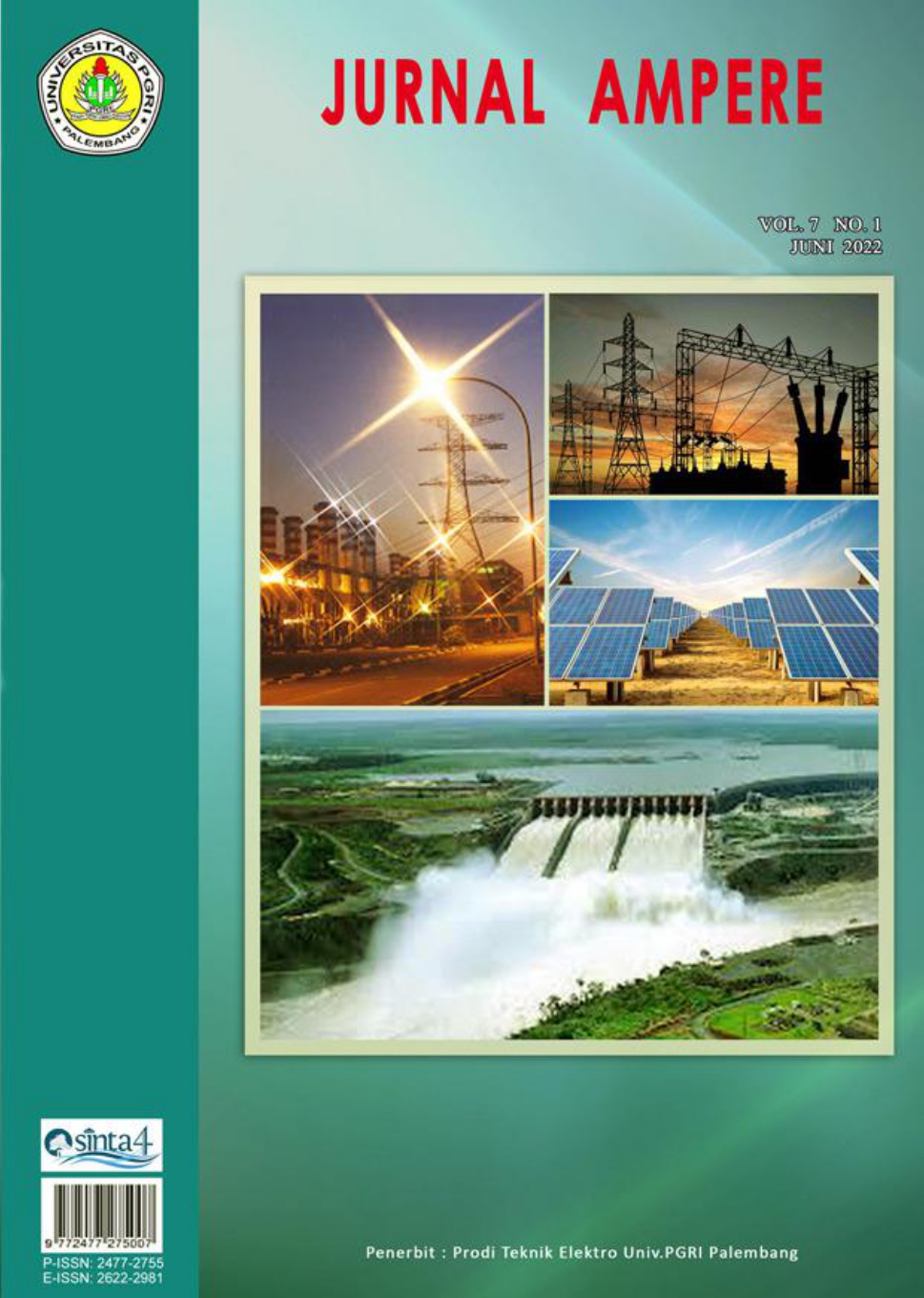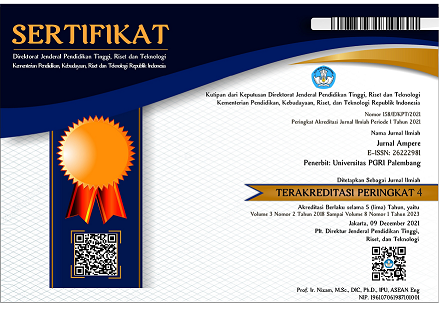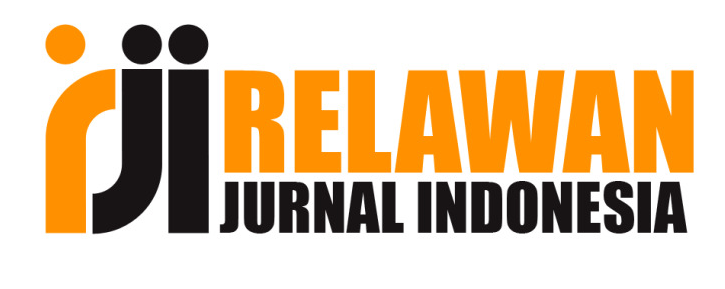Prototype of Electric Power Monitoring System and Load Control in Residential Houses Using IoT-Based ESP8266
DOI:
https://doi.org/10.31851/ampere.v7i2.9214Keywords:
Monitoring daya listrik, Kontrol Beban, Blynk, Internet of ThinkAbstract
The use of the Internet of Think (IoT) for a system that can monitor the use of load and electrical power in a residential house will be very necessary. This is because homeowners who often go out and leave their homes with loads that are still active, for example, house lights that are always turned on will be a waste of electrical energy. The purpose of making this article is to create a system that can control electricity use automatically using the Internet Of Think (IoT) and monitor the electricity data in real time, calculate the amount of current, voltage, and power in an entire load. Calculating the comparison of sensor and manual values by looking at the percentage of errors on the sensor, and analyzing whether the sensor is suitable for use or not. The systems used are: Pzem 004t as an overall reader of electrical power, LDR sensor as light input to turn on the lights automatically when it is dark, and nodemcu esp8266 as input/output process and sends data to the internet via a wifi network which will be monitored through the application. Blynk Iot 2.0
Â
ABSTRAK
Penggunaan Internet of Think (IoT) untuk sistem yang dapat memonitoring penggunaan beban dan daya listrik  pada sebuah rumah tinggal akan sangat diperlukan. Hal tersebut karena pemilik rumah yang sering berpergian keluar dan meninggalkan rumahnya dengan beban yang masih aktif contohnya lampu rumah yang selalu dihidupkan akan menjadi pemborosan energi listrik tersebut. Tujuan dari pembuatan artikel ini adalah yaitu membuat sistem yang dapat mengontrol penggunaan listrik secara otomatis menggunakan Internet Of Think (IoT) serta memonitoring data listrik tersebut secara realtime, menghitung jumlah arus, tegangan, dan daya pada suatu keseluruhan beban yang ada. Menghitung perbandingan nilai sensor dan manual dengan cara melihat persentase kesalahan pada sensor tersebut, dan menganalisa pada sensor tersebut layak digunakan atau tidak. Adapun sistem yang digunakan yaitu: Pzem 004t sebagai pembaca keseluruhan daya listrik, sensor LDR sebagai input cahaya untuk menghidupkan lampu secara otomatis ketika hari sudah gelap, dan nodemcu esp8266 sebagai proses input/ouput dan pengirim data ke internet melalui jaringan wifi yang akan dimonitoring lewat aplikasi Blynk Iot 2.0.
References
N. A. Hidayatullah and D. E. Juliando, “Desain dan Aplikasi Internet of Thing (IoT) untuk Smart Grid Power Sistem,†VOLT J. Ilm. Pendidik. Tek. Elektro, vol. 2, no. 1, p. 35, 2017.
A. Furqon, A. B. Prasetijo, and E. D. Widianto, “Rancang Bangun Sistem Monitoring dan Kendali Daya Listrik pada Rumah Kos Menggunakan NodeMCU dan Firebase Berbasis Android,†Techné J. Ilm. Elektrotek., vol. 18, no. 02, pp. 93–104, 2019.
F. Nur and S. Setiawidayat, “Alat Monitoring Pemakaian Energi Listrik Berbasis Android Menggunakan Modul PZEM-004T,†vol. 01, no. 01, pp. 157–162, 2017.
Arafat, S.Kom, M.Kom, “SISTEM PENGAMANAN PINTU RUMAH BERBASIS Internet Of Things ( IoT ) Dengan ESP8266,†vol. 7, no. 4, pp. 262–268, 2016.
D. A. Putra and R. Mukhaiyar, “Monitoring Daya Listrik Secara Real Time,†Voteteknika (Vocational Tek. Elektron. dan Inform., vol. 8, no. 2, p. 26, 2020.
H. Andrianto and A. Dermawan, belajar cepat dan pemrograman, 2nd ed. informatika bandung, 2021.
B. Esp, “Analisis sistem monitoring daya dan kendali saklar berbasis esp8266,†vol. 6, pp. 46–52, 2021.
D. Locker et al., “Bina Darma Conference on Engineering Science http://conference.binadarma.ac.id/index.php/BDCES,†pp. 89–97.
Downloads
Published
How to Cite
Issue
Section
License

Jurnal Ampere is licensed under a Creative Commons Attribution-ShareAlike 4.0 International License.
Authors who publish with this journal agree to the following terms:
- Authors retain copyright and grant the journal right of first publication with the work simultaneously licensed under a Creative Commons Attribution License that allows others to share the work with an acknowledgement of the work's authorship and initial publication in this journal.
- Authors are able to enter into separate, additional contractual arrangements for the non-exclusive distribution of the journal's published version of the work (e.g., post it to an institutional repository or publish it in a book), with an acknowledgement of its initial publication in this journal.
- Authors are permitted and encouraged to post their work online (e.g., in institutional repositories or on their website) prior to and during the submission process, as it can lead to productive exchanges, as well as earlier and greater citation of published work.






